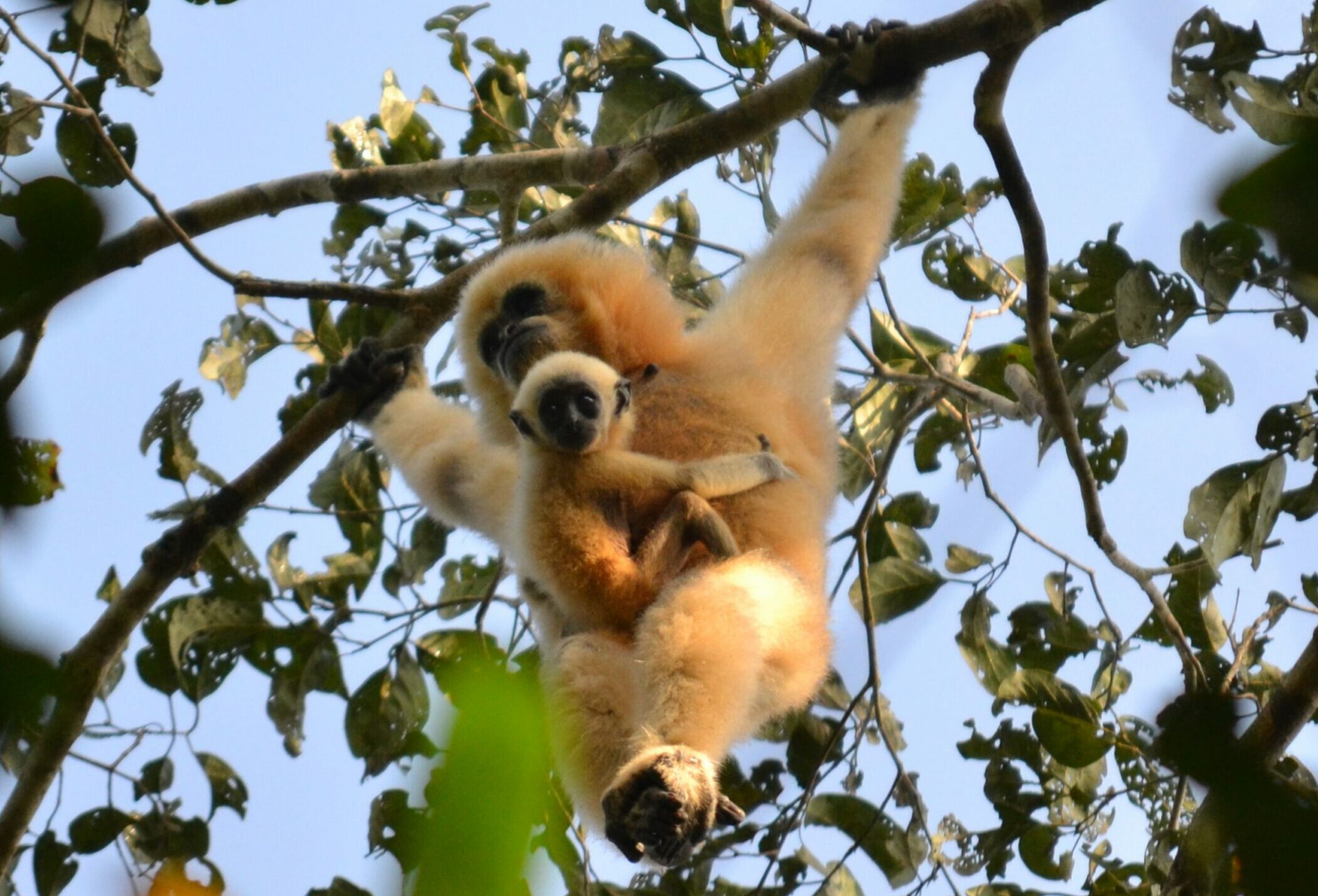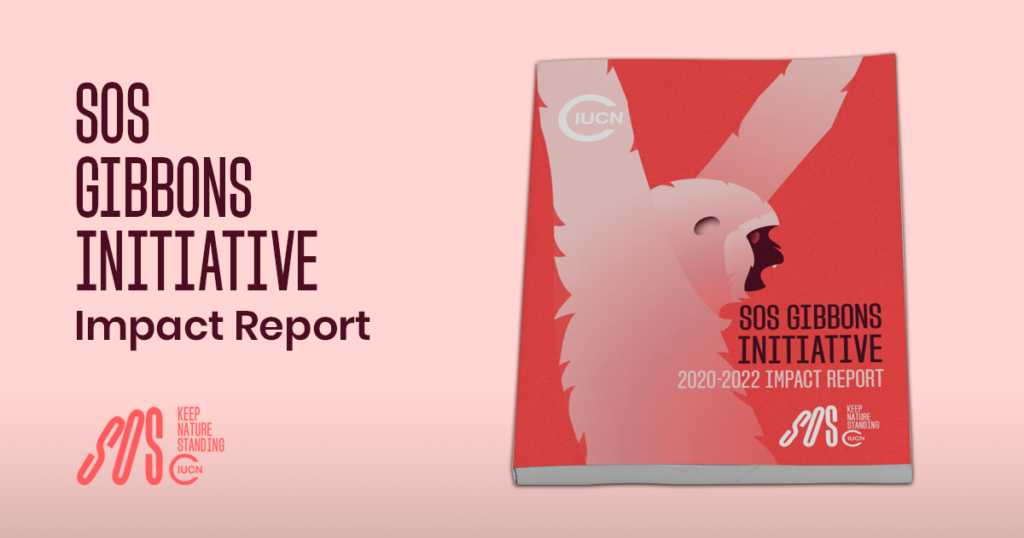Initiative
SOS Gibbons
SOS Gibbons is a three-year initiative funded by a Private Foundation from the Netherlands. The goal of SOS Gibbons is to catalyse conservation action for some of the most threatened gibbon species through the provision of grants to Civil Society Organisations working on the frontline of conservation.

Gibbons are small apes comprising 20 species, all of which are endemic to South and Southeast Asia. They live across 11 countries including India, Myanmar, China, Indonesia, Lao PDR, Thailand, Malaysia, Brunei Darussalam, Bangladesh, Vietnam and Cambodia, mainly in tropical evergreen rainforests. Globally they are one of the most threatened families of primates; five species are considered Critically Endangered, 14 Endangered and one Vulnerable on the IUCN Red List of Threatened Species™, which means they are each at imminent risk of extinction.

Habitat loss, hunting, poaching and the illegal pet trade represent the main threats to all gibbon species. Despite the high level of threat that these small apes face, to date funding for gibbon conservation has been a fraction of the resources invested in the conservation of other ape species such as orangutans, gorillas, chimpanzees and bonobos. It is necessary to step up conservation efforts for these species and ensure that action takes place in a coordinated way.
Meanwhile, gibbons play a vital role in seed dispersal in forest ecosystems. Fruits are a prominent part of their diet making them integral to maintaining forest health. Gibbons therefore play a critical role in maintaining ecosystem services and ensuring livelihoods for local communities, which makes their conservation urgent. Effective gibbon conservation can deliver far-reaching and lasting benefits for species, habitats and communities across South and Southeast Asia.
This initiative funds a series of activities to improve the long-term survival of gibbon species. These include frontline conservation activities, additional conservation planning to determine national priorities, support of knowledge transfer of experiences among conservationists as well as communications activities to raise public awareness on the holistic benefit of conserving these singing and swinging small apes.
Any active Calls for Proposals are posted on the Calls for Proposals web-page.
Image credit: Santiago Cassalett




